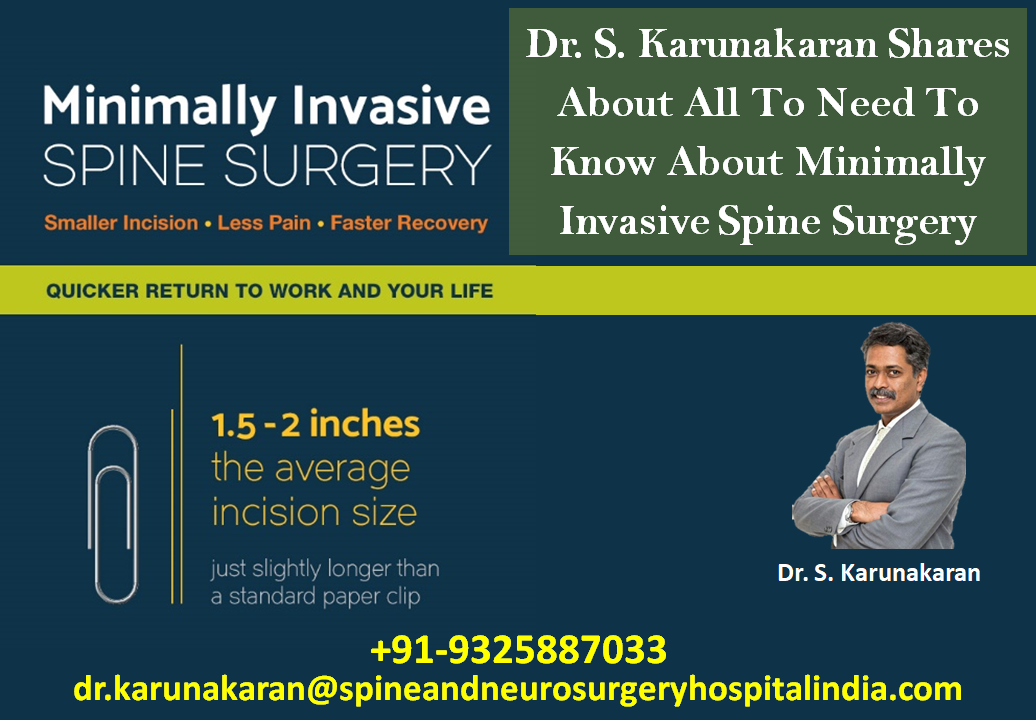Minimally invasive techniques have been adopted more slowly in spine surgery than in other surgical disciplines, primarily due to the difficulty of accessing and visualizing critical structures through small, closed working channels. MISS aims to offers the same as the ones of open surgery while minimizing muscle dissection, disruption of ligament attachment sites and collateral damage to soft tissues.

Minimally invasive approaches can spare these tissues and reduce collateral damage. A tubular retractor system is used that dilates rather than dissects muscle. By utilizing sequentially larger tubes, the working channel is expanded without cutting muscle fibers. The reduction in trauma has been shown to reduce immediate negative effects, such as pain and disability, but not long-term outcomes, says Dr. S. Karunakaran specialized in safe spine surgery.
"When minimally invasive lumbar decompression is performed well with the right patient, there are advantages in the early phase, but the final outcome should be the same as with open procedures. There are no long-term outcomes reported in the literature where minimally invasive techniques led to a better end result than traditional approaches," he says.
Minimally invasive approaches are used when indicated. But Dr. Karunakaran cautions that it is far more important to perform all the functions necessary to fully and safely decompress the nerves than to worry about the method used to expose them. "It is essential to do the same tasks in minimally invasive surgery that are done in open procedures," he says. "You need to pick out patients with a focal disease that may respond best to small windows of exposure, and you cannot compromise on the elements of surgical treatment that have been proved to provide full decompression just because you are using minimally invasive techniques. You need to be able to see what you need to see. Otherwise, MISS becomes a mistake."
One alternative to traditional anterior and posterior approaches is lateral interbody fusion, which is performed using a lateral trajectory that can avoid abdominal and vascular structures as well as the spinal canal and nerves. "Lateral interbody fusion allows access to the front of the spinal canal in a trajectory that has the least amount of tissue disruption," Dr. Karunakaran says. "It is a new and powerful technique that is gaining more favor."
Clearing up a misconception regarding MISS, the best spine surgeon at Global Hospital at Chennai India Dr. Karunakaran says it's not uncommon to need multiple small incisions to complete a minimally invasive fusion, whether approaching the spine from the anterior, lateral or posterior direction. "The total extent of the skin incision is probably as long as or longer than a standard midline incision. It's not the length of the skin incision that defines minimally invasive techniques but rather the minimization of collateral tissue damage incurred while trying to reach the spine. The surgery needs to accomplish certain goals in order to correct the pathology. We have to continue to achieve what we have been achieving surgically for decades, and if we can do that with less collateral damage, then that would be ideal," he explains.
He explains, “The most common risk is on the path of the steep curve, where the balance must be against the unsure long-time period benefit of MISS. That said, our primary promise to the patient is to 'Do no harm.' If we can limit the collateral damage and still perform all of the key elements of the surgery to an equivalent or superior degree of completion, then MISS approaches are most appropriate, to book an online appointment of Dr. S Karunakaran visit https://www.spineandneurosurgeryhospitalindia.com/global-hospital/doctors/dr-s-karunakaran/
"There is a constant desire to do things in a less invasive manner, and this will be increasingly possible as our experience grows and our implants and instrumentation get better. That said, less is more when it comes to collateral damage, so if you can achieve the goals of surgery through less invasive methods, then you have made the best case for use of MISS techniques."